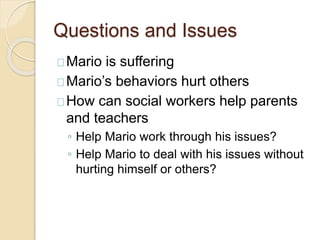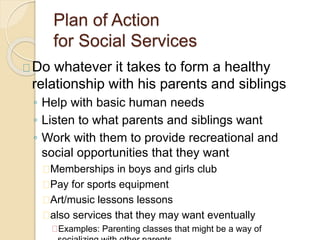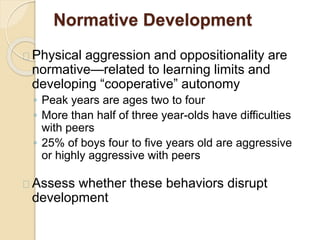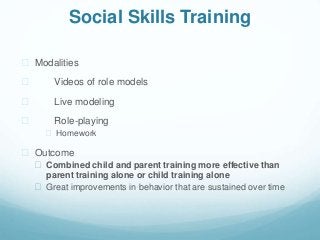The document discusses conduct issues in children, focusing on disorders such as Oppositional Defiant Disorder and Conduct Disorder, and emphasizes the importance of understanding the child's developmental history and trauma. It presents a case study of a 12-year-old boy named Mario, highlighting the need for trauma-informed approaches and consistent behavioral interventions at home and school. The document also outlines strategies for social workers and educators to support affected children and their families through relationship-building, skill development, and appropriate parenting techniques.




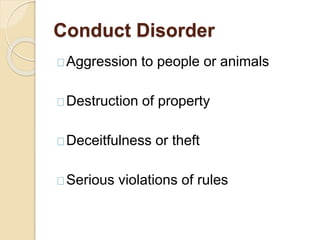
![Case Example: Mario, 12
Two views from an early age
“bad kid” and the family scapegoat
a sweet, charming boy; excellent one-on-one
School records
“antagonistic; he likes to start things;
he gets in fights
he is very mean at times
where it seems he just wants to hurt other kids
he has a horrible temper”
“susceptible to teasing [and] reacts with both physical and
verbal aggression.”](https://image.slidesharecdn.com/conductissuess-140720013927-phpapp01/85/Work-with-Children-with-Conduct-Issues-6-320.jpg)





